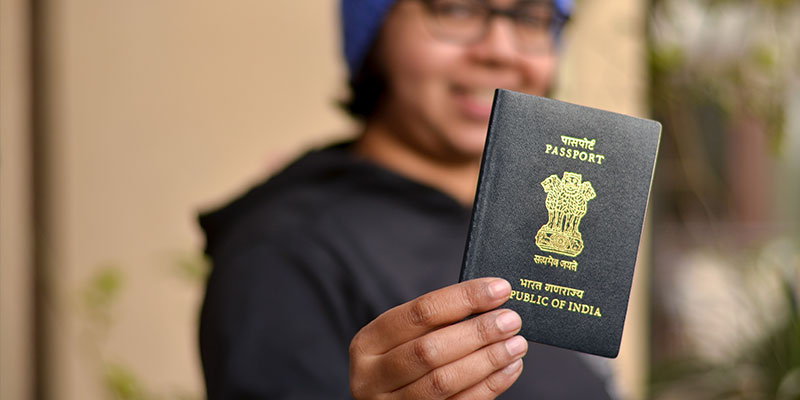
In this blog, you will learn about the following topics under the H1B visa cap:
The H1B visa is one of the most popular visas, and for a good reason. If you are from a foreign nation, you can use the HIB visa to work under a US-based foreign employer and stay in the country for at least six years. With options like H1B portability, you can also change employers and eventually acquire a green card that makes you a permanent resident of the United States.
The H1B is an employer-sponsored visa, which means that your employer must offer you a job and bear the expenses for your visa. The H1B visa has an annual cap, which most people consider a major impediment in the process. So, what is the H1B Visa Cap, and in what way does it impact your chances of obtaining your visa? Let's explore all the details.
The H1B Cap refers to the final number of visa petitions the US Congress approves every fiscal year. The Cap has a total limit of 85,000 visas, which are categorized as follows:
The USCIS decides whether a petition is subject to the 65,000 regular H-1B visa cap or the master's Cap, as mandated by Congress. The H1B cap is therefore subject to change based on the USCIS's regulations.
The H1B Cap comprises three types:
Before you start exploring the different visa caps, read to know about H1B Master's Degree Exemption.
The H1B regular cap is known by other terms like:
It is the common and basic Cap with a limit of 65,000 applications/ fiscal year. The Cap includes prospective foreign workers without an advanced academic degree or equivalents. In general, all H1B applicants, except master's degree holders, fall under Regular Cap.
All H1B applicants with a master's degree or an advanced degree in their field will automatically be categorized under the Master's Cap. However, there is one contingency. The master's degree should have been obtained in the United States. No other master's degree obtained outside the US qualifies for this Cap.
The USCIS runs a separate lottery for all petitions categorized under the Master's Cap. Therefore, the best way to improve your chances of acquiring an H1B visa is to enter the H1B Master's degree cap exemption. It can be done by obtaining an advanced degree from any eligible institution in the US that:
You can also refer to the Department of Education's website to know about the available accreditation programs in the United States.
The USCIS takes all qualifications for institutions very seriously. It will issue a Request For Evidence or RFE if it cannot determine your institution's:
The USCIS also has the power to deny your petition if your institution is not accredited or is a for-profit university.
All H1B petitions in the master's quota H1B are entered into the regular Cap, where some lucky master's beneficiaries get selected right after the first lottery round. In the next step, all the unselected master's petitions are entered into the Master's lottery. This gives all Master's cap entities a double chance of getting selected in the H1B quota.
The H1B Country Cap is also known as the Chile-Singapore Cap or H1B1 Cap. Out of the 65,000 limits in the Regular Cap, 6,800 are designated especially for residents of Chile and Singapore under the Free Trade Agreement. Of the 6,800 petitions, 5,400 are allotted for Singapore citizens, and the remaining 1,400 are for Chileans.
All unused H1B visas from the Singapore and Chile Country Cap are taken forward for the next fiscal year, where they are distributed in the first 45 days of the process. This addition allows the USCIS to grant more than 65,000 H-1B visas in the Regular H-1B Cap.
Also Read: The H1B Visa Lottery - A Quick Guide
The USCIS gives a stipulated time for your employer to file your H1B petition, which begins on the first business day in April. The window will be open for a few days, during which your employer must file your H1b petition. The USCIS will reject all petitions filed after the determined date.
Step 1: The USCIS will then conduct the famous H1B lottery only if the H-1B quota candidate list surpasses 65,000. In the first lottery round, 65,000 petitions are randomly chosen under the Regular Cap.
Step 2: The USCIS identifies those eligible H-1B master's cap registrations from the list of those denied in the regular lottery.
Step 3: The USCIS then runs the second lottery round to select about 20,000 applicants under the Master's Cap if the total number of advanced degree petitions exceeds 20,000 numbers.
Step 4: All unselected H1B petitions in either round are rejected and returned to the applicants with a refund of the filing fees. Rejected applicants can reapply for H1B visas only in the next fiscal year.
As soon as the USCIS releases the H1B lottery results, your registration status will be changed to any one of the following three:
1. Selected
This status means your H1B petition is selected and will be further processed by the USCIS. However, being selected in the H1B lottery does not guarantee that your H1B visa will be approved.
2. Denied
This status means your petition is rejected. In case your employer has submitted multiple petitions, all of them stand disqualified and are rejected.
3. Not Selected
All "Not-Selected" petitions are kept under the "Submitted" status until the fiscal year end. The "Submitted" status will change to "Not-Selected" only if these petitions are not used to fill more spaces throughout the following six months.
Understanding how the H1B Cap works and when you should submit your petition can greatly improve your chances at the H1B lottery. If you harbor any doubts or queries regarding the same, please feel free to check out TechFetch H1B.
**Disclaimer: All H1B visa processes are subject to change. Therefore, kindly refer to USCIS's official website for the latest information regarding the H1B visa.